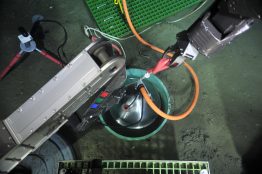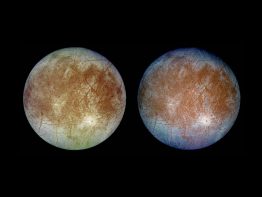The upcoming Europa Clipper mission will send instruments to investigate Europa, shown here, the smallest of Jupiter’s four large moons. New UW research shows that one of the instruments destined for the next mission could find traces of a single cell in a single ice grain ejected from the planetary body’s interior.
Read more at UW News »Shallow soda lakes show promise as cradles of life on Earth
Charles Darwin proposed that life could have emerged in a “warm little pond” with the right cocktail of chemicals and energy. A new study from the University of Washington reports that a shallow “soda lake” in western Canada shows promise for matching those requirements. The findings provide new support that life could have emerged from lakes on the early Earth, roughly 4 billion years ago.
Read more at UW News »Year in review: College of the Environment story highlights from 2023
From new discoveries in our solar system to insights about how predators and prey interact with humans, 2023 was another impressive year of research in the College of the Environment. Our students tackled new challenges, and we celebrated anniversaries, new honors, new leadership positions and more.
Read more »UW researchers land $10.6M to build subduction zone observatory
Scientists and engineers from the UW School of Oceanography, Department of Earth and Space Sciences and the Applied Physics Lab, along with partners at Scripps Institution of Oceanography, recently were awarded more than $10 million to build an underwater observatory in the Cascadia subduction zone. The funding comes from the National Science Foundation and aligns with larger efforts to better understand subduction zones more broadly.
Read more »Experiments measure freezing point of extraterrestrial oceans to aid search for life
Researchers from the University of Washington and the University of California, Berkeley have conducted experiments that measured the physical limits for the existence of liquid water in icy extraterrestrial worlds. This blend of geoscience and engineering was done to aid in the search for extraterrestrial life and the upcoming robotic exploration of oceans on moons of other planets. The results were recently published in Cell Reports Physical Sciences.
Read more at UW News »





